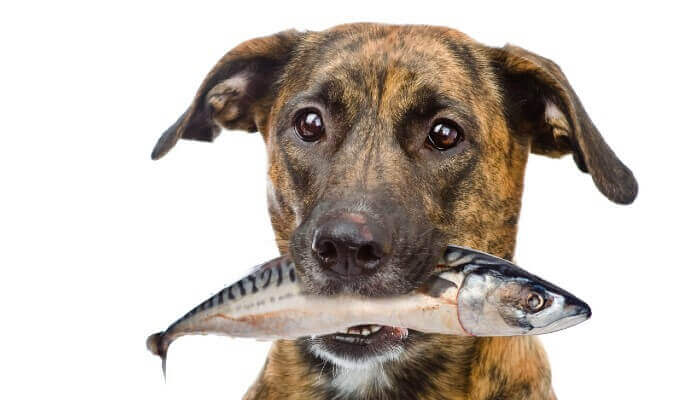Which Fats Are Healthy For Dogs?

Unlike its nutritional siblings protein and fiber, fat doesn’t get much good press in the pet food world. There’s an obvious reason for this — feed your dog too much fatty food and you risk them becoming obese, a condition that can lead to a ton of nasty health conditions.
However, that doesn’t mean you should race out of the house and stock up on fat-free dog food. That’s because not all fats are created equal and some varieties can be good for your pet — indeed, some are essential to life.
“Healthy fats and oils are a great energy source for active, happy pups,” says Bridget Meadows, Director of Food Engineering at Ollie. “It helps them to fuel their muscles and absorb important vitamins and minerals. Dogs also need fat in their diet to stay visibly healthy — a dog with good fat in their diet has enough energy to play, healthy skin, and a shiny coat.”
As well as that, healthy fats can aid with the following:
- Cell development
- Neurological function
- Hormone production
- Reproductive support
- Inflammation reduction
What are the good types of fat?
So which fats should parents look for in dog food to get these effects? There are two big ones.
Omega-3 fatty acids
You might already be familiar with Omega-3 fatty acids from their inclusion in human food products. They tend to make their way into dog food recipes via ingredients recognizable to parents, such as flaxseeds, fish oils and canola.
There are several different types of Omega-3s to be aware of, including alpha-linolenic acid (ALA), eicosapentaenoic acid (EPA), and docosahexaenoic acid (DHA). Sometimes, pet food ingredients on the back of the packaging will be described as being enriched by one of these.
“Omega 3 fatty acids like DHA are especially important for the development of puppies, including the growth and health of their brain and eye function,” says Meadows. Added to that, Omega-3s can help with your dog’s hearing and strengthen their nervous system.
At the other end of the scale, your pet runs the risk of suffering from depression, poor memory and learning ability, or declining sight and hearing if they don’t have enough Omega-3s in their diet.
Omega-6 fatty acids
Despite the name, these aren’t doubly as good as Omega-3s — the number refers to the position of the first double bond in the hydrocarbon chain. Essentially, they’re similar, but different.
For a start, Omega-6s are derived from different sources, such as animal fat, sunflower oil or coconut oil.
And while Omega-6s also contribute towards healthy brain function, they also play an important role in ensuring optimal growth, immune function and reproductive support.
Without enough Omega-6s in their diets, dogs run the possibility of suffering from unhealthy weight loss, impaired growth, hair loss, skin conditions and increased chances of infections.
How can I ensure my dog’s getting enough Omega fatty acids?
No mammal is capable of synthesizing their own supply of Omega-3 or Omega-6 fatty acids, so they’re dependent on getting them from their food.
Be sure to look at the ingredient list of pet food before you serve it up to your dog and look out for the ingredients listed above.
Alternatively, puppy food that meets the AAFCO’s Nutrient Profile for Growth & Maintenance should include the minimum amount of ALA, EPA and DHA as recommended by the organization.
However, there’s no minimum amount required in food labeled as Adult Maintenance, although there’s a maximum ratio of Omega-6s to Omega-3s permitted, which is 30:1.1
If you’re concerned the food you’re serving to your dog is lacking in Omega-3s or 6s, you can search for recipes including ingredients rich in fatty acids or ask your vet about the possibility of giving your pet dietary supplements.


